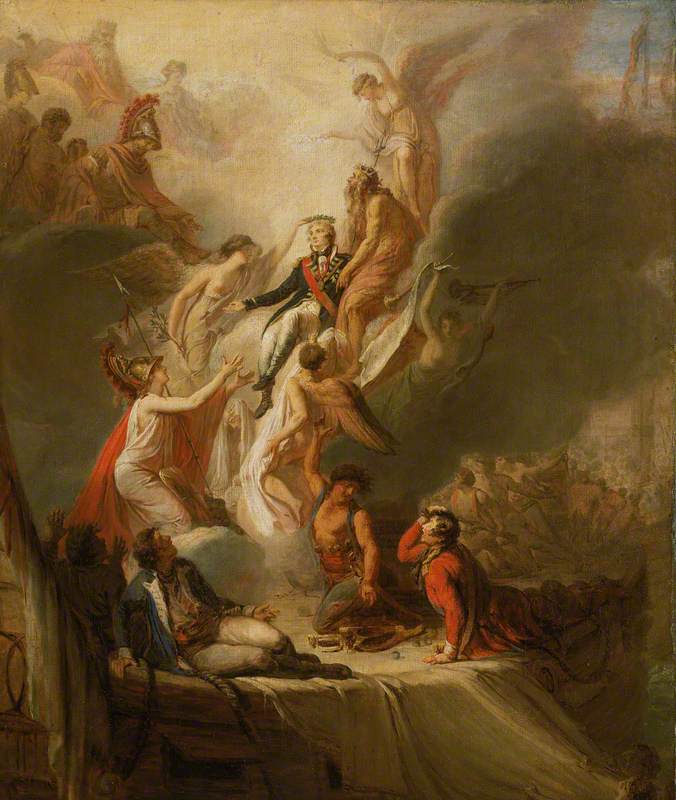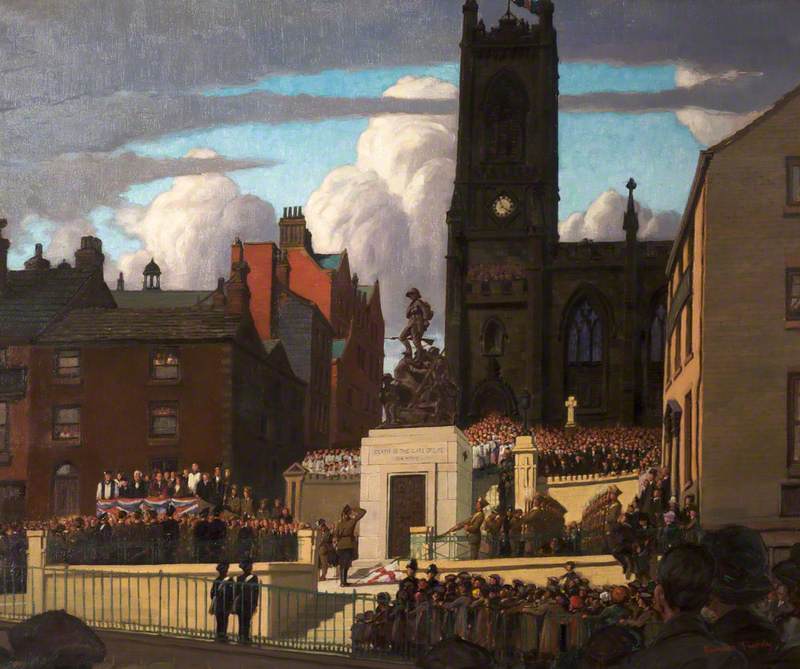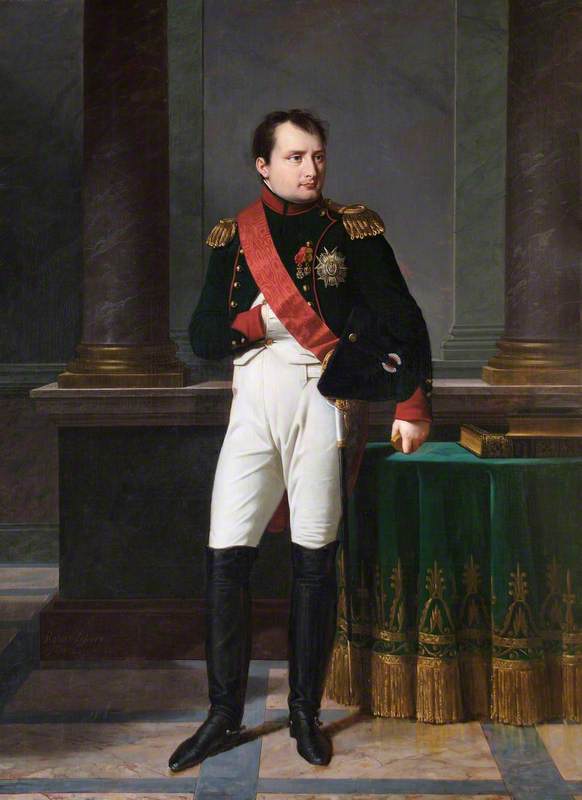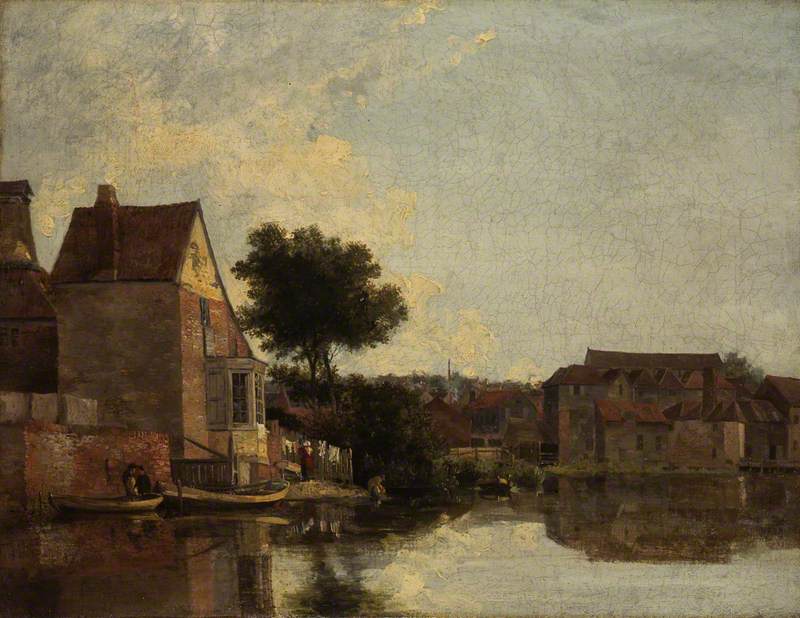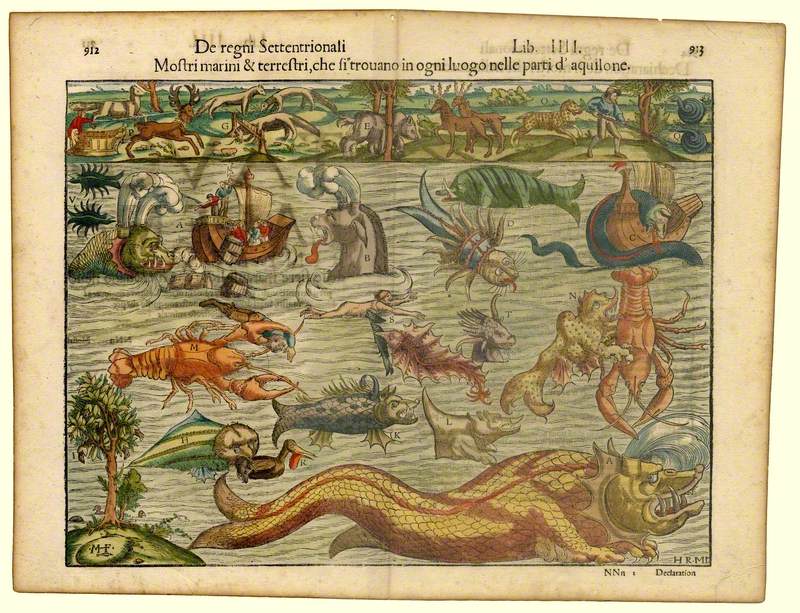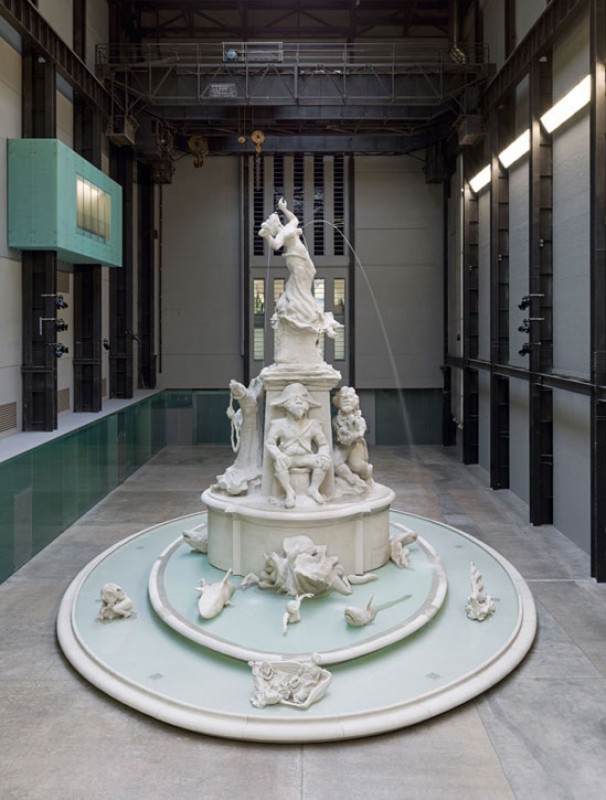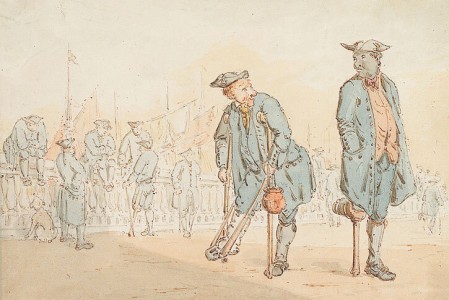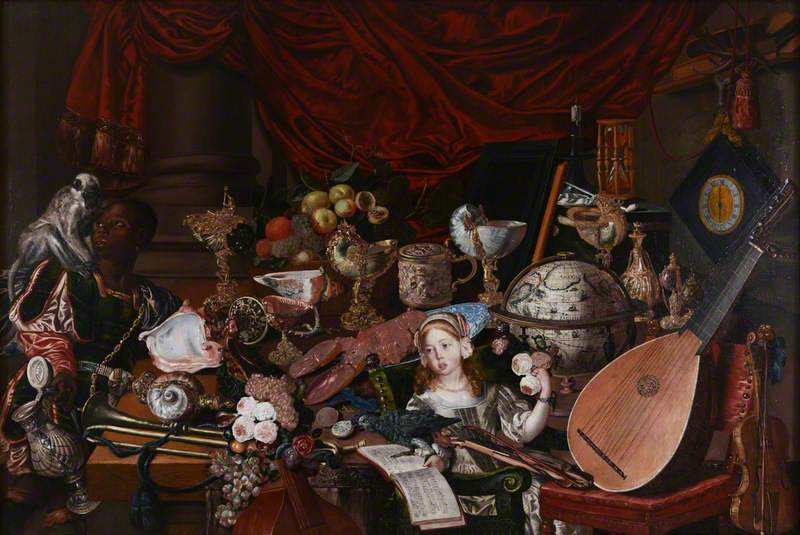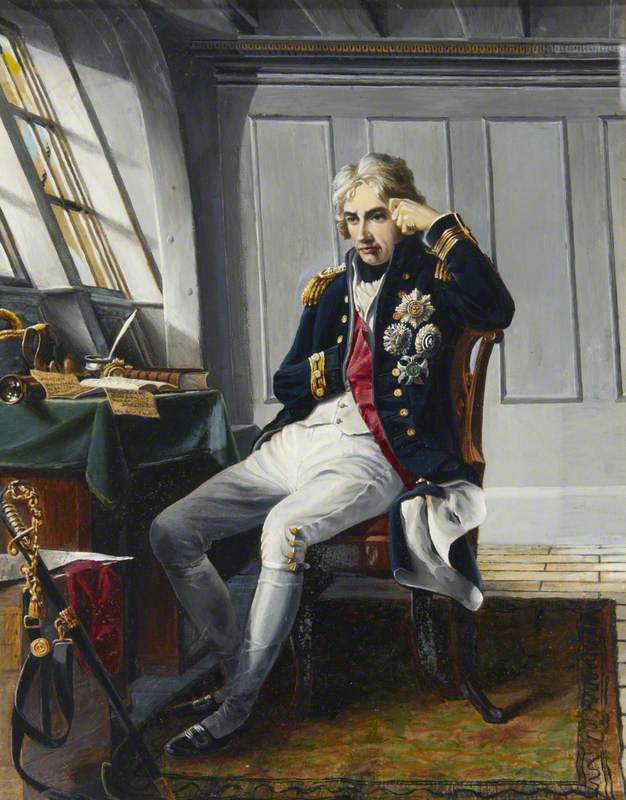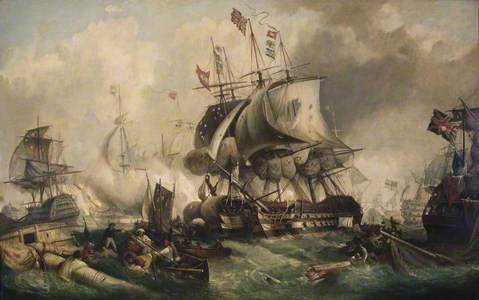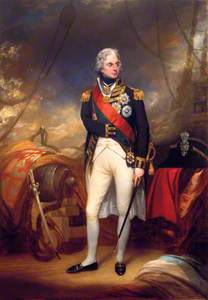'I am myself a Norfolk man...'
This summer, a major new exhibition at Norwich Castle Museum and Art Gallery explores the life and legacy of Norfolk's most famous son: Admiral Lord Horatio Nelson. 'Nelson & Norfolk' presents some of the most extraordinary and potent objects connected to Nelson, from his boyhood in the county to his death at the Battle of Trafalgar in 1805.
These include the single bullet (or musket ball), which mortally wounded Nelson at the Battle of Trafalgar, the undress coat and hat which Nelson wore at the Battle of the Nile, together with the monumental French Tricolour, the ensign (or flag) of the French warship Le Généreux.
Undress hat worn by Nelson at the Battle of the Nile
Interior of undress hat worn by Nelson at the Battle of the Nile
Showing William Beechey inscription 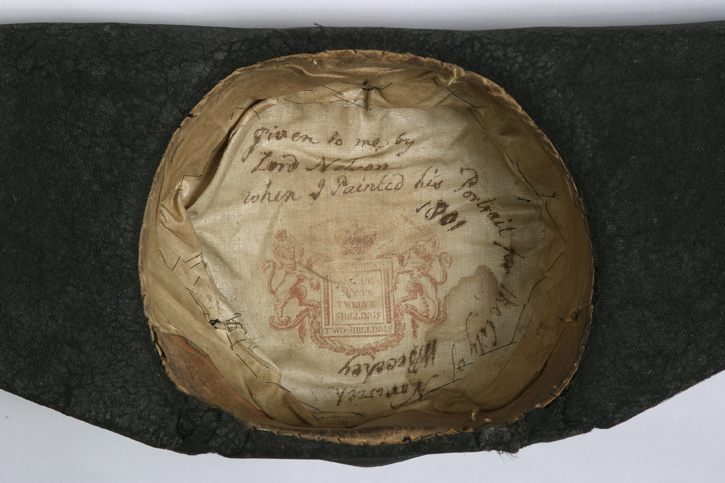
Never before seen together in the same display, these objects illuminate the complex, sometimes controversial life of Britain's foremost naval hero.
Very few figures have inspired the level of fame and devotion achieved by Lord Horatio Nelson in his own lifetime, let alone gone on to secure such an enduring place in the country's imagination. Exhibition Curator Ruth Battersby Tooke is keen to use objects relating to pivotal moments in Nelson's life to explore this fascinating legacy:
'The exhibition is built around key objects such as the fatal bullet and the ensign, with their remarkable histories. In explaining the story of each of the unique and significant exhibits, we are providing insights into Nelson and his times, the cult of his personality and the way he has been lionised and commemorated. The exhibition's main themes are Nelson's extraordinary legacy, his reputation and the ongoing nature of his "Immortal Memory".'
The Nelson bullet
1805 
The Nelson bullet, usually on display at Windsor Castle, has been generously lent by Her Majesty The Queen from the Royal Collection, and this is the first time it has been shown in Nelson's home county. Although it cost Nelson his life, the Battle of Trafalgar, which took place on the 21st October 1805, is still regarded as one of Britain's greatest naval victories.
Another undisputed centrepiece is the highly important, early French Tricolour – the monumental ensign of the French warship Le Généreux, which took part in the Battle of the Nile in 1798. A British victory, the battle sealed Nelson's reputation as England's greatest hero.
The Battle of the Nile, 1 August 1798: End of the Action
1799
Thomas Whitcombe (c.1752–1824) 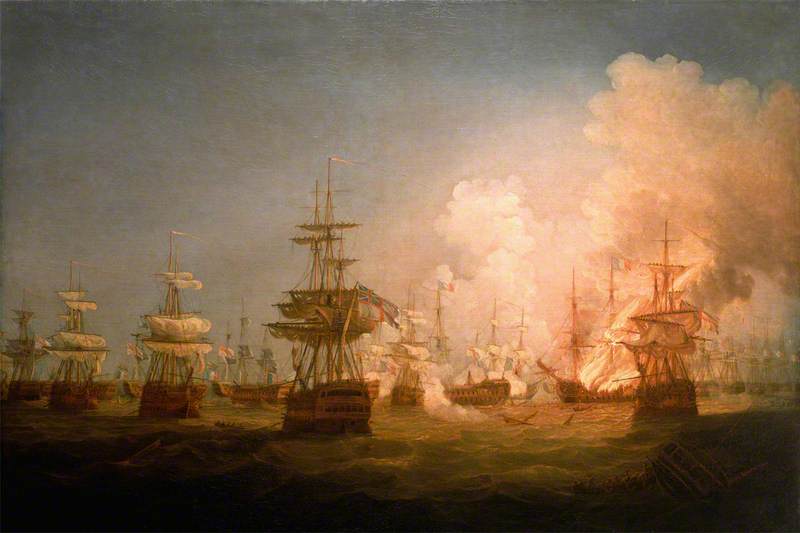
Although Le Généreux was one of only two ships of the line from the French fleet to escape this historic battle, it was subsequently captured, on 18th February 1800 by Nelson's flag captain Sir Edward Berry, on board HMS Foudroyant.
When the huge ensign of Le Généreux was 'struck' – removed from the flagpole at the rear of the ship – and surrendered to Sir Edward Berry, it was immediately despatched as a gift to the City of Norwich. One of the largest (it measures 16m x 8.3m – roughly the size of a tennis court) and most iconic objects connected to Admiral Lord Nelson, this is the first time this historic object has been on public display for more than a century and has posed interesting challenges for Norwich Castle's talented in-house Design and Technical team, as Ruth explains:
'Our ambition has always been to show the flag as far as possible in its entirety, but laid out flat it's almost exactly the same size as our first exhibition gallery! The solution is a specially constructed sloping plinth, the angle carefully calibrated so as not to put any stress on the flag's stitching. This will allow us to show almost the whole of the flag and will be an incredibly powerful and dramatic sight.'
The Ensign of 'Le Généreux'
St Andrews Hall, Norwich, October 2016 
Alongside these headline objects are many other revealing items grouped into themes exploring different aspects of Nelson's life and career. These begin with his birth and early years in his beloved home county of Norfolk. This section includes the Burnham Thorpe Parish Register, the village where Nelson was born, displayed alongside the poignant 'Dear, dear Burnham' letter written by Nelson in 1804.
Other sections focus on the Battle of the Nile, which took place on 1st August 1798, Naples and Emma, Nelson's death and, finally, his funeral.
We are very fortunate to have been able to work with national lenders for this exhibition. The National Maritime Museum has kindly loaned us Nelson's famous coat which he wore at the Battle of the Nile, reunited for the first time since 1891 with the hat he wore at this decisive battle.
Emma Hamilton and Nelson
Late eighteenth century, embroidered silk by Emma Hamilton (1765–1815) 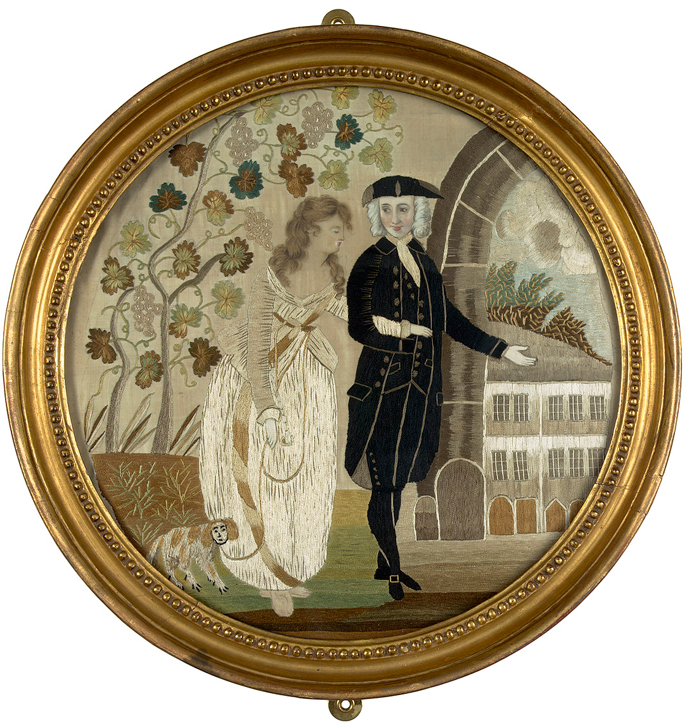
No exhibition about Nelson can avoid the subject of his time in Naples, where he met the extraordinary Emma Hamilton, who became the love of his life. Particularly poignant is a charming locket (in the collection of Norwich Castle) that contains two different locks of hair. The high quality of the workmanship suggests that it was probably a private commission and there is a possibility that the hair enclosed is that of Nelson and Emma Hamilton, making this a hugely romantic and enigmatic object.
Nelson's death is illustrated by the painting Apotheosis of Nelson, also on loan from the National Maritime Museum. It clearly conveys the level of hero-worship that Nelson had inspired during his lifetime and which was set to continue for generations to come.
Nelson's funeral resulted in a public demonstration of grief on a national scale. The dramatic black velvet drape from Nelson's funeral car, together with the painted silk hatchment, both used at his funeral, have not been seen together since the funeral car was dismantled, c.1826. They will be displayed alongside a uniform worn by a Greenwich Volunteer who guarded Nelson's coffin during his two days lying in state and additional extensive Nelson funeral memorabilia.
Horatio, Viscount Nelson (1758–1805)
1801
William Beechey (1753–1839) 
Presiding over the exhibition as a whole is the large, compelling portrait in oils of Nelson by the artist William Beechey, commissioned by the City of Norwich and completed in 1801.
The portrait features another noteworthy exhibit, namely the sword surrendered to Nelson by the Spanish Admiral Xavier Winthuysen after the Battle of Cape Saint Vincent on 14th February 1797. When two Spanish ships, the San Nicolas and the San Josef, became entangled, Nelson was able to board one then the other. On the deck of the San Josef, Nelson received the surrendered swords of the Spanish, including this one.
'Nelson & Norfolk' is not intended to be a chronology of the life and times of Nelson illustrated by objects. Instead, this exhibition takes its starting point and narrative drive from the objects themselves. In bringing together so much authentic material, the exhibition is a once-in-a-lifetime chance to experience the story of Britain's most famous naval hero and his enduring place in the country's imagination.
Esther Morgan, Relationships Officer, Norfolk Museums Service
'Nelson & Norfolk' was on at Norwich Castle Museum & Art Gallery from 29th July to 1st October 2017

